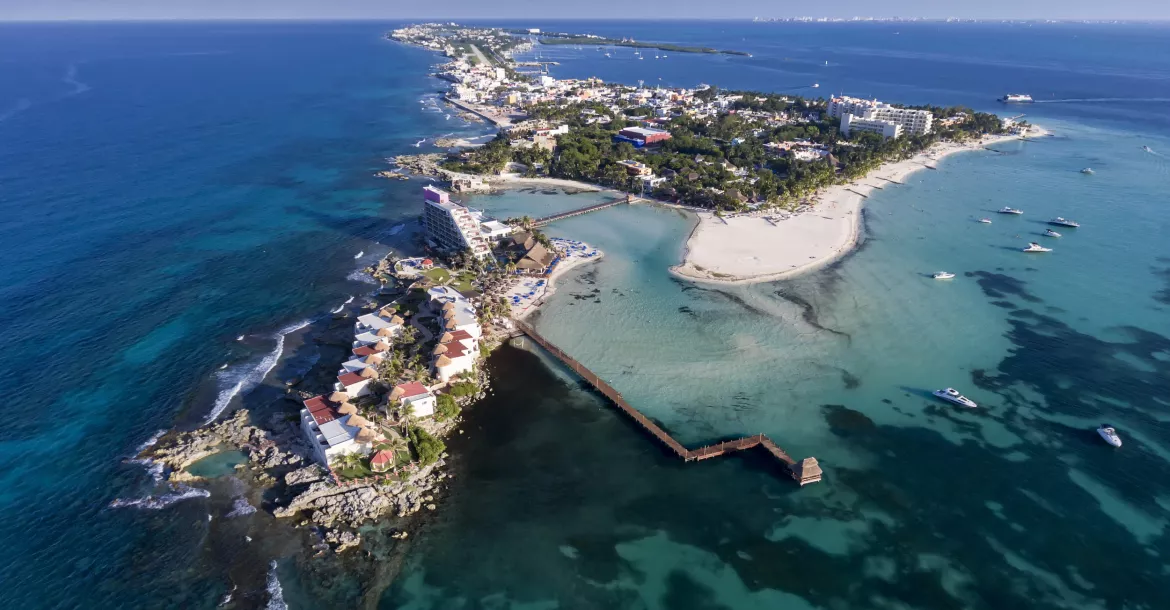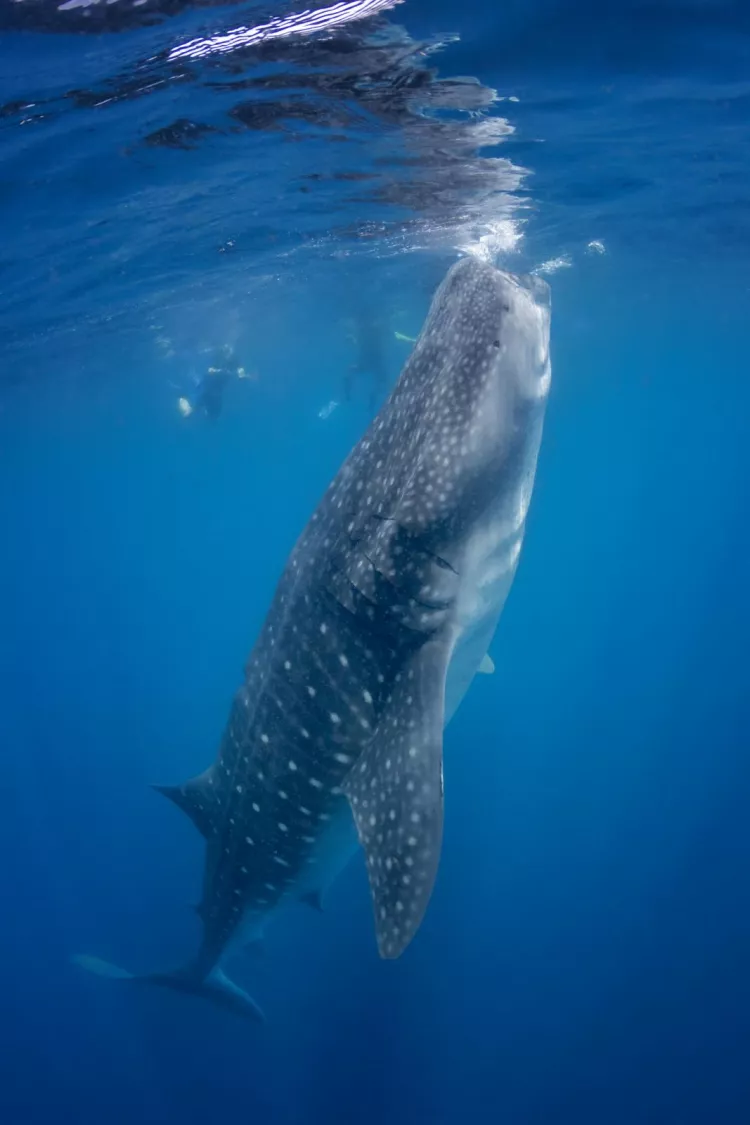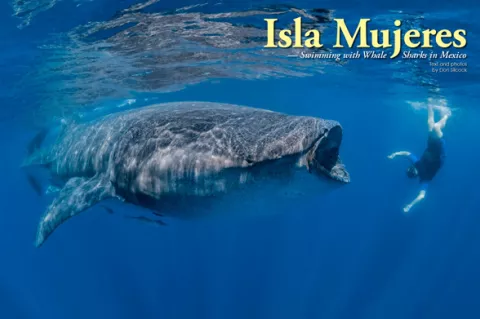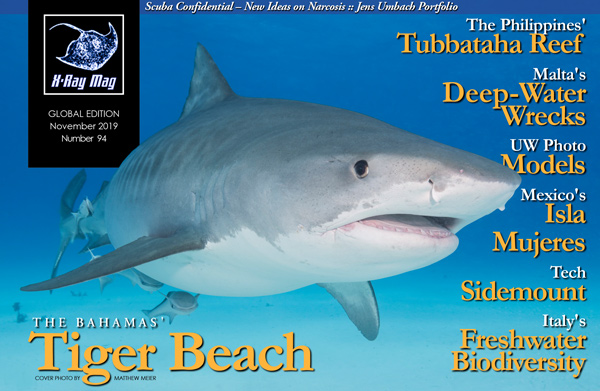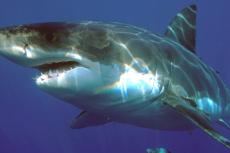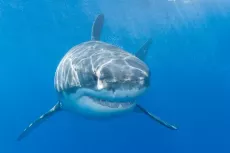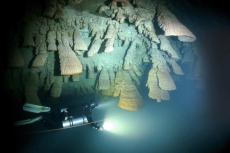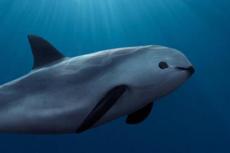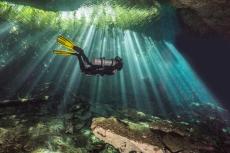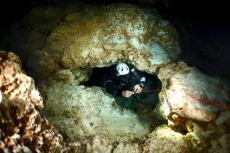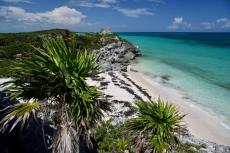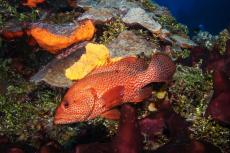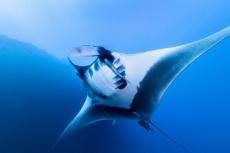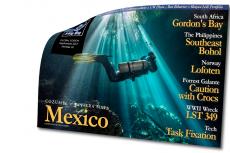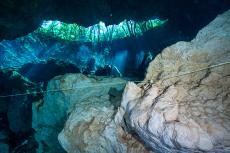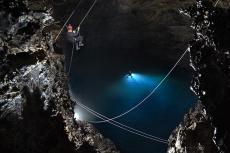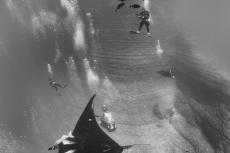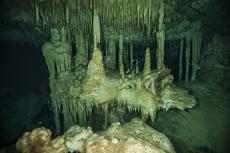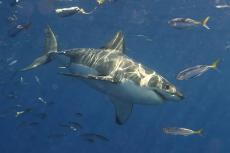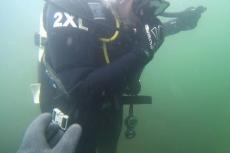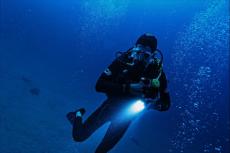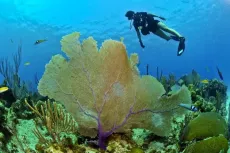Every year, as the summer heat descends on the Yucatan peninsula, an amazing phenomenon takes place in the waters to the northeast of the small holiday island of Isla Mujeres. Local fishermen call it the Afuera (Mexican for “outside”), in reference to those deeper waters offshore from the tip of the Yucatan where, come July and August, the largest known gathering of whale sharks (Rhincodon typus) takes place.
Contributed by
Factfile
Asia correspondent Don Silcock is based in Bali, Indonesia.
For extensive location guides, articles and images on some of the best diving locations in the Indo-Pacific region and “big animal” encounters globally, please visit his website at: indopacificimages.com.
Long considered as solitary giants roaming the open oceans, aggregations of whale sharks seemed quite rare and, prior to the discovery of the Afuera, a large gathering was thought to comprise 15 to 20 whale sharks. Typically, those aggregations were associated with high seasonal concentrations of zooplankton.
However, it seems that whale sharks are really quite social creatures when something special is on the menu. And the Afuera offers them something really different: an almost unlimited quantity of rich, energy-dense nourishment. Literally hundreds of whale sharks gather to gorge themselves on this all-you-can-eat buffet in nature.
The Afuera: hidden in plain sight
Incredibly, it would seem that this massive aggregation has been taking place for many years, generations possibly—all quite unbeknown to either the scientific or ecotourism communities. But the local fishermen knew, and the first rumours apparently surfaced as early as 2002.
However, at that time, all the attention was on the aggregation of whale sharks and manta rays in the shallow coastal waters between Cabo Catoche and Isla Holbox, on the northern tip of the Yucatan.
The discovery of the Cabo Catoche aggregation, as it is known, led to a number of scientific surveys to quantify the population and dynamics of the whale sharks, which was followed by the eventual establishment of a Whale Shark Biosphere Reserve by the Mexican government in 2009.
The Cabo Catoche aggregation of whale sharks also created a thriving and regulated ecotourism industry on nearby Isla Holbox around whale shark watching. So, it was not until September 2006 that the Afuera was actually investigated, when Mexican whale shark scientist Rafael de la Parra managed to organise a series of five aerial surveys.
What the survey revealed astonished everyone involved. Because not only were the rumours true, but the numbers of whale sharks spotted were almost unbelievable—with a total of 480 sightings recorded in an elliptical area of open ocean of about 18 sq km!
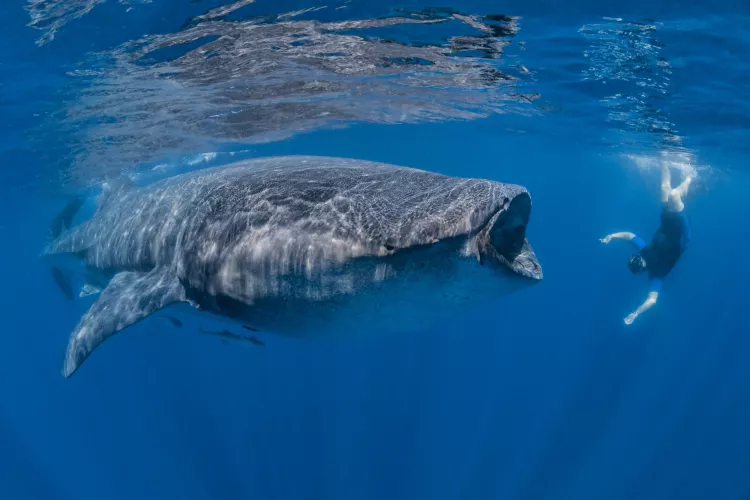
Little tunny
The Cabo Catoche aggregation of whale sharks take place in the shallow coastal waters off the northeastern tip of the Yucatan peninsula. Beginning in May and ending around mid-September, most of the whale sharks are present for a few weeks from late July to the middle of August. They gather to feed on the seasonal spawning of crustaceans (copepods and sergestid shrimp) and the aggregation is known for its turbid waters and poor visibility, which makes any kind of underwater photography quite challenging.
And yet, at the Afuera, just 55 to 65km away, huge numbers of whale sharks were gathering in what, from the air, appeared to be deep and clear blue waters. Subsequent investigations by de la Parra revealed the presence of huge quantities of fish eggs in the water, which DNA testing identified as eggs from the little tunny (Euthynnus alletteratus)—the most common tuna in the Atlantic Ocean.
Little tunny can grow to about 900mm in length and weigh up to 12kg, but the average size is just over half of that—a fraction of the larger species of tuna and most probably how it got its name. But what little tunny lack in overall size they make up for with their prolific ability to breed, which they do by the females releasing massive quantities of eggs into the water column, followed by the males releasing their sperm.
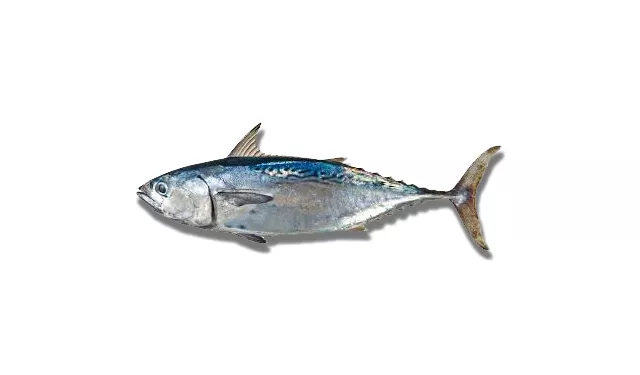
The female little tunny are incredibly fertile creatures and can release 1.75 million eggs over the course of a mating season. Those eggs are circular and transparent, plus they are buoyant because they contain a droplet of oil—so they are pelagic and able to float in the current.
In the Atlantic Ocean, those mating seasons occur from around the middle of April when the water temperature reaches about 25°C (77°F) and can last until mid-September, with the most intense spawning taking place in July and August. The main spawning areas are in offshore waters that are typically 30 to 40m deep—all of which perfectly describes the location and timing of the Afuera.
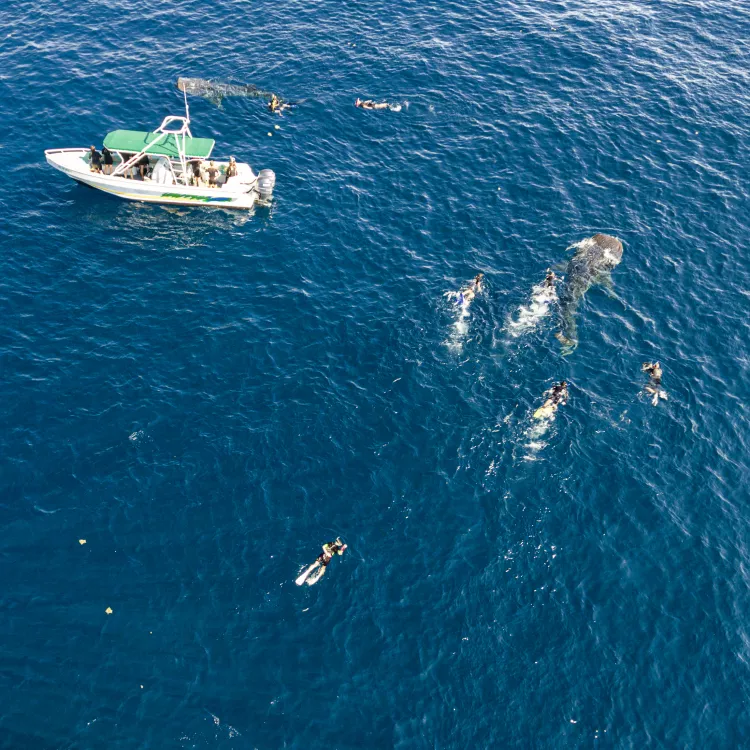
Isla Mujeres and Cancun
Just as a significant whale shark watching industry has been established around the Cabo Catoche aggregation from Isla Holbox, a similar but bigger one has grown around the Afuera and is serviced from both Cancun and nearby Isla Mujeres. The big difference between the two is that Cabo Catoche occurs within the Whale Shark Biosphere Reserve and is therefore regulated. Unfortunately, for now at least, the Afuera is neither protected nor regulated.
There is a lot you could say about both Cancun and Isla Mujeres—both positive and negative—and I can only offer my personal opinion. Cancun is not my cup of tea, as I found it far too touristy and over-developed, while Isla Mujeres is also somewhat over-developed but has a much more laidback and slightly rustic charm. Plus, the principal form of transport there are golf carts!
The estimated two million tourists who visit Cancun every year have a wide array of entertainment options available to them, and in the Afuera season, this also includes “guaranteed” whale shark swimming. A similar mechanism occurs on Isla Mujeres. What this means is that every morning, a veritable armada of whale-shark-swimming boats leave from both locations. The “guaranteed” part means that the tourists will be in the water with the whale sharks twice. Basically, they will get their turn as the people on board each get immersed.
It is hardly a quality experience, but in all probability, it is all most of the tourists want. And what appears to be happening is that the operators bring the tourists out, give them two immersions with the whale sharks and then it is time to get them back to Cancun or Isla Mujeres.
Quality time
To have any kind of quality time with the whale sharks, you need to sign up for a private tour. Which means that somebody organises all the logistics for you, so you can simply turn up with your camera, mask and fins to enjoy the experience. That is exactly what I did, and I was pleased with the overall outcome, which involved five full days out on the water.
Being in a private boat means that you stand a good chance of getting to the whale sharks before the tourist armada arrives and have some good encounters before it all turns into a zoo. Then, it is just a question of finding a good spot to continue swimming with the whale sharks. But be ready to be surrounded by a bunch of tourists dropped in beside you!
However, the “zoo” part does not last that long, as the boats want to get back as soon as they have fulfilled their two-encounter guarantee. Typically, that is about two hours or so, and then the number of boats starts to decline rapidly and calm returns. Interestingly, none of this seems to bother the whale sharks, who just get on with what they are there for—feasting on the little tunny eggs.
In the water
Personally, prior to my trip to Isla Mujeres, I had very limited experience of in-water encounters with whale sharks. Those that I had, in places like Mozambique, Papua New Guinea and Socorro in Mexico, are probably best described as fleeting.
Surface encounters in Mozambique revolved around cruising whale sharks looking for food, and the best chance of a quality encounter was if a shark found a large quantity of floating plankton and hung around until it was all consumed.
Otherwise, it was basically a “drive-by,” in which you are dropped in front of an approaching whale shark and it swims towards and past you. There is very little chance of staying with a whale shark when it is swimming, as they move decidedly quicker than they look like they are. Often though, the whale shark would see you and the other snorkellers and then resort to “banking”—a defensive mechanism whereby it dives down and turns its back, with its really thick hide, on you.
While underwater on scuba in Papua New Guinea and Socorro, the encounters are even more fleeting, as it is more of a three-dimensional meeting with the two-dimensional divers at the surface. The time spent with the animals seems like milliseconds, as they move past so quickly!
But at Isla Mujeres, the whale sharks are so focused on feeding that they basically ignore you, which means you can have some very close encounters. The buoyant little tunny eggs keep the whale sharks at the surface, and they are simply feeding to their hearts’ content. To these whale sharks, you and all the tourists seem to be nothing more than a minor annoyance, which is quickly forgotten as they continue to feed.
How it works
Whale sharks and their migratory patterns are a source of great mystery, and nobody really knows where they come from and go to. However, from a very layman-like and non-technical perspective, it would seem that they have a routine that they follow, with key way-points where they can feed as they grow.
For example, at Tofo in Mozambique, the whale sharks that gather there are of a certain size, as are the ones at Isla Mujeres and Cabo Catoche. While in the Galapagos, some really big ones are seen during the season.
Well-known whale shark scientist Simon Pierce made a back-of-the-envelope calculation that while at the Afuera, the animals consume about 143kg of little tunny eggs during an 11-hour feeding period, which seems a lot taken by itself. But this needs to be taken into the overall context, because the whale sharks are gorging while they can, and long periods can follow where the whale sharks may not find food at all. It also explains why it is believed that many of the whale sharks tagged and identified at both Cabo Catoche and the Afuera stay in the overall area for up to six months at a time. Plus, while you and the tourists are ignored, these guys are focused on the food!
Feeding time
Knowing this basic fact allows the whale sharks’ in-water behaviour also to be understood—something that took me a couple of days to rationalise when I was there in the thick of it all.
Think of the whale sharks as totally focused on the food supply. While they are swimming forward at the surface, they can ingest what is immediately in front of them. For a whale shark, that is a good thing, as they might go for considerable periods in which there is no food in front of them. So, when they eventually swim out of the area where the tunny eggs are, they stop. And, it would seem, they simply turn around and go back.
What that means for you is that if you have been dropped in where the tunny eggs are, there will be an endless procession of whale sharks making their way back and forth through their personal little tunny-egg corridor. And all you have to do is stay where you are and look for the next one.
In practical terms, this means that as soon as you have finished one encounter, you need to be looking for the next approaching whale shark. So, you need to try and fin up a bit and spot the next approaching fin and get in position.
Bottle feeding
For me, the most spectacular encounter possible during the Afuera is the “Botello” of bottle feeding. This appears to occur when the whale shark happens upon a large patch of food. That can be little tunny eggs at the Afuera, crustaceans at Cabo Catoche or just plain old zooplankton elsewhere.
The whale sharks seem absolutely determined to consume every piece of that patch of food and to make sure they do so, they assume a vertical position and basically hoover up every last piece. And as they do this, they seem totally fixated on the task at hand, which allows you to have a terrific, really close encounter. Although, it has to be said, the size of a whale shark’s gaping mouth does bring thoughts of “Jonah and the whale” to mind when one gets really close!
In conclusion
The annual Afuera aggregation is a must-do if you are into seeing and photographing “big animals.” Whale sharks are after all the biggest fish in the sea, and the encounters with them to the north of Isla Mujures are very special.
Simply stated, being in the water with so many whale sharks, where all you have to really do is wait for the next one to appear, simply does not happen anywhere else—at this point in time at least. The aggregation is so special and clearly of profound importance to whale sharks in general, we have to hope that Rafael de la Parra and his wife Beatriz, together with people like Simon Pierce, can convince the Mexican government to extend the current biosphere at Cabo Catoche to cover the Afuera. ■

